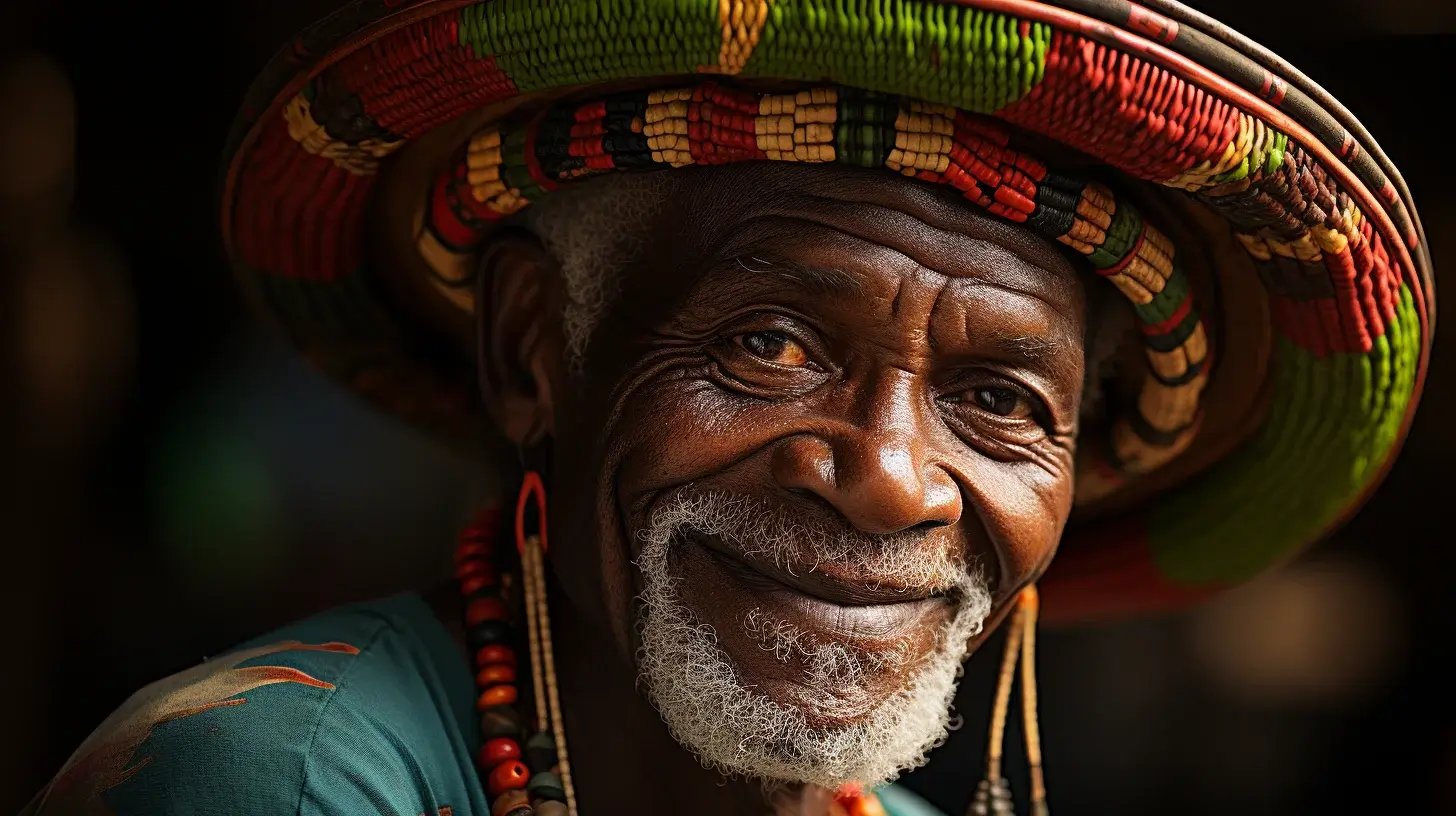Celebrating Guyana’s Freedom Day, we mark May 26th as a pivotal moment in our nation’s tale. Back in 1966, this was the day Guyana broke free from the chains of British rule, kicking off an era filled with self-governance and the birth of a unique identity. The importance of this day shines through in the vibrant yearly celebrations that honor our diverse cultural heritage.
Our national identity is deeply rooted in the symbols and traditions that have emerged since independence. The Golden Arrowhead, Guyana’s flag, proudly displays our nation’s colors and reflects our rich natural wealth and the unity and aspiration of our people. Independence Day in Guyana is a public holiday and a time for collective reflection, celebration, and appreciation of our journey as a sovereign state, reinforcing our sense of national pride.
Key Takeaways
- Guyana observes its Independence Day on May 26th, marking the country’s sovereignty gained in 1966.
- The Golden Arrowhead flag symbolizes the nation’s identity, wealth, and the unity of the Guyanese people.
- Independence Day is a significant event that fosters national pride and showcases cultural diversity through various festivities.
Historical Background

In this section, we explore Guyana’s intricate journey towards independence, from early colonization to the building of a nation post-independence.
Pre-Colonial and Colonial Era
Before European arrival, present-day Guyana was inhabited by indigenous groups including the Arawak and Carib peoples. Our historical narrative pivots when Christopher Columbus voyaged close to Guyana’s coastline in 1498. Subsequently, the Dutch established their presence in the early 17th century, setting up trade and battling for control over the territory with the French and British. By the 18th century, regions such as Essequibo, Demerara, and Berbice were heavily contested.
The vibrant slave trade bolstered the colony’s economy but also caused profound human suffering. In 1814, the Dutch formally ceded control to Britain, and the territory was united as British Guiana in 1831, marking the onset of prolonged British colonial rule.
Path to Independence
The drumbeat for self-governance began resonating louder after World War II. Leaders like Cheddi Jagan and Forbes Burnham emerged, catalyzing the Nationalist Movement. Jagan, fostering a vision of a Marxist society, and Burnham, advocating for a more moderate approach, often clashed, setting a stage for political rivalry that punctuated the independence movement.
Our path to obtaining political independence was embedded with multiple milestones including internal self-government in the early 1960s, widespread protests, and the controversial Labour Relations Bill. The latter incident triggered an alignment between Burnham’s People’s National Congress (PNC) and the United Force (UF), forming a coalition government.
Post-Independence Developments
British Guiana was renamed Guyana after declaring independence from Britain on May 26, 1966. The young nation initially retained a semblance of a constitutional monarchy but later reconstituted itself as the Cooperative Republic of Guyana on February 23, 1970, with a newly drafted constitution. Our first President, Arthur Chung, signified our final step away from colonial rule.
Unfortunately, the post-independence era was tainted by political rivalry and racial strife. Accusations of election fraud marred the democratic process. Presidents Forbes Burnham and Desmond Hoyte struggled to steer Guyana through economic challenges and civil unrest.
We acknowledge that this encapsulation does not fully contain all the nuances of our history, but it sketches the key contours of our journey to an independent state.
National Identity and Symbols

As we celebrate Guyana’s independence, our national identity is most prominently reflected through our cherished symbols and cultural expressions. These symbols unite us as Guyanese and testify to our cultural heritage.
Flag, Anthem, and Emblems
The National Flag, known as the Golden Arrowhead, features green, yellow, white, black, and red colors. Green represents the lushness of our forests, white symbolizes the rivers, black stands for our endurance, yellow represents the golden future, and red expresses the zealous energy of the people. The flag signifies our land’s richness and our people’s spirit.
The National Anthem of Guyana, titled “Dear Land of Guyana, of Rivers and Plains,” speaks to the natural beauty of our homeland and our aspirations for unity and liberty. It serves as a musical representation of our national pride and unity.
Our Coat of Arms bears the motto “One People, One Nation, One Destiny,” which emphasizes our quest for unity while celebrating our ethnic diversity. Distinctive features include the royal helmet and two jaguars, symbols of a proud and free nation.
Cultural Expressions
The arts and dance are vibrant aspects of Guyanese life that celebrate our mixed heritage. From visual arts that capture the essence of our landscape and people, to the movements and rhythms of traditional dance, we find an expression of our complex history.
Guyanese Hindustani reflects the unique cultural blend, a language that ties us to our Indian roots. This, along with other elements of our diverse heritage, is celebrated through our national festivities, which are lively displays of our unity and cultural richness.
In these symbols and cultural touchstones, we see the threads that weave together our shared identity—a people united under the Golden Arrowhead, singing our anthem with pride, and expressing our national spirit through the rich tapestry of our arts and cultural heritage.
Guyana Independence Day Celebrations

Every year on May 26, we come together to celebrate Guyana’s historic journey to sovereignty, marked by vibrant festivities that commemorate our nation’s Victory over colonial rule. Here’s how we observe this significant day across the nation, particularly in our capital, Georgetown.
Annual Observances
May 26 is a day of great pride for us as we honor our heritage and the strides we have made since gaining independence in 1966. The day unfolds with the iconic Flag-Raising Ceremony, a revered tradition that takes us back to the momentous night when the Union Jack was lowered for the last time, and our national flag, the Golden Arrowhead, ascended. This ceremony is not merely a ritual; it’s a reenactment of our Victory — a tactile reminder of our journey towards self-governance. The festivities routinely occur in Independence Square, amid the passionate cheers of our fellow Guyanese.
Following the flag-raising, the air in Georgetown is filled with the sounds and sights of various performances that exhibit our cultural diversity. These include music, dance, and theatrical portrayals, each narrating a chapter of our storied past. These vibrant expressions of our culture are an integral part of the celebration as they reinforce our national identity and the values that unite us.
Civic Engagement and Education
We see Guyana Independence Day as an opportunity for civic engagement and education. Our celebrations are imbued with the spirit of educating our citizens—young and old—about the significance of this day. Through seminars, public talks, and interactive school activities, we delve into our history, re-telling the stories of the heroes who paved the way for our independence.
The commemorative events also encourage civic participation, calling on all Guyanese to contribute to the nation’s progress. Whether through discussions fostering national unity, debates on the path ahead, or community-driven initiatives, we take this chance to reflect on our responsibilities as citizens. It is a day when we, as a nation, reinforce our collective commitment to nurturing a society that our forebearers would be proud of.
On the night of May 26, the sky over Georgetown bursts into color with a grand fireworks display, a visual representation of our jubilation. As the fireworks illuminate the night, reflecting on the Demerara River, we’re reminded of the bright future that lies ahead, a promise made possible by the sacrifices of our ancestors. The fireworks are more than a spectacle; they symbolize our ongoing aspiration to rise above challenges and celebrate the triumphs that each year of independence brings.
Notable Events and Figures

In celebrating Guyana’s Independence Day, we honor the strides made by national heroes and remember historic events that have shaped our nation.
National Heroes and Leaders
Forbes Burnham and Cheddi Jagan stand out as pivotal figures in our fight for independence. As leaders of their respective political entities, their contributions were instrumental in Guyana’s journey to become a free nation. We must acknowledge Burnham’s tenure as the first Prime Minister and later President, during which he significantly shaped our post-independence political landscape.
- Forbes Burnham
- First Prime Minister (1964-1980)
- Later President (1980-1985)
- Cheddi Jagan
- Premier (1961-1964)
- President (1992-1997)
Historic Occurrences
Our history as Guyanese is marked by several significant events. The partnership between A Partnership for National Unity (APNU) and the Alliance for Change (AFC) led to the election of David Granger as President in 2015, showcasing a collaborative effort towards governance and unity in our political framework.
On a more somber note, we cannot overlook the tragedy of Jonestown in 1978, which was one of the darkest and most tragic events in our history. While not directly tied to our independence, it is a part of our national narrative that has affected our international standing and remains an important chapter in our collective memory.
- A Partnership for National Unity / Alliance for Change (APNU+AFC)
- Coalition that brought David Granger to Presidency in 2015
- Jonestown (1978)
- A tragedy affecting more than 900 lives, reflecting on our nation’s resilience
Understanding and honoring these key figures and events gives us a deeper appreciation for our nation’s storied past and ongoing narrative.
FAQ – Guyana Independence Day
What is Guyana Independence Day
Guyana Independence Day is a national holiday in Guyana celebrated on May 26th. It commemorates Guyana’s independence from British rule, which was achieved on May 26, 1966.
How is Guyana Independence Day Celebrated?
Celebrations include cultural performances, parades, music and dance events, sporting competitions, and official government ceremonies. Many people also display the national flag and wear clothing featuring the colors of the flag.
What Are Some Traditional Activities on Guyana Independence Day?
Traditional activities often include flag-raising ceremonies, cultural shows highlighting Guyanese music and dance, art exhibitions, and street fairs showcasing local crafts and cuisines.
If you enjoyed reading about Guyana Independence Day, check out our other articles:
- Grenada Independence Day 2024: Celebrating National Identity and History
- Estonia Independence Day 2024: Significance and Celebrations
- Cape Verde Independence Day 2024: Significance and Celebrations
Feel free to also check out our other Articles from the category “Independence Day“ and don’t forget to follow us on Pinterest.

